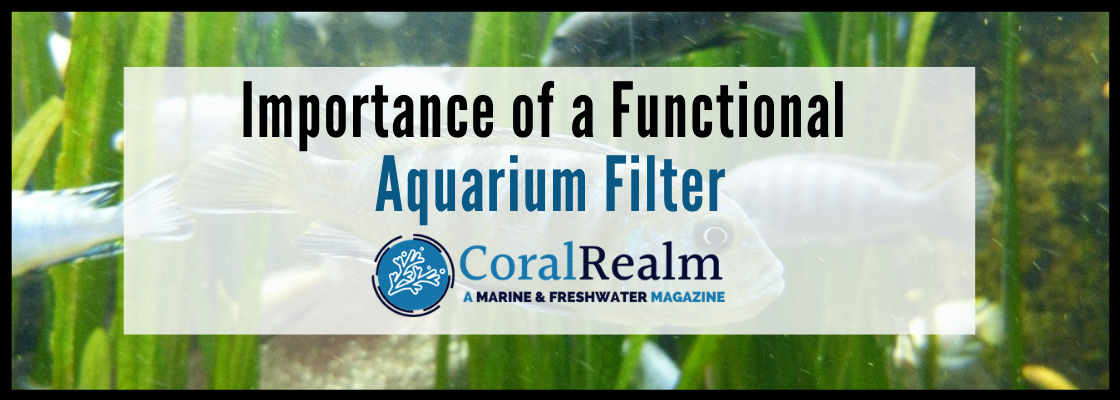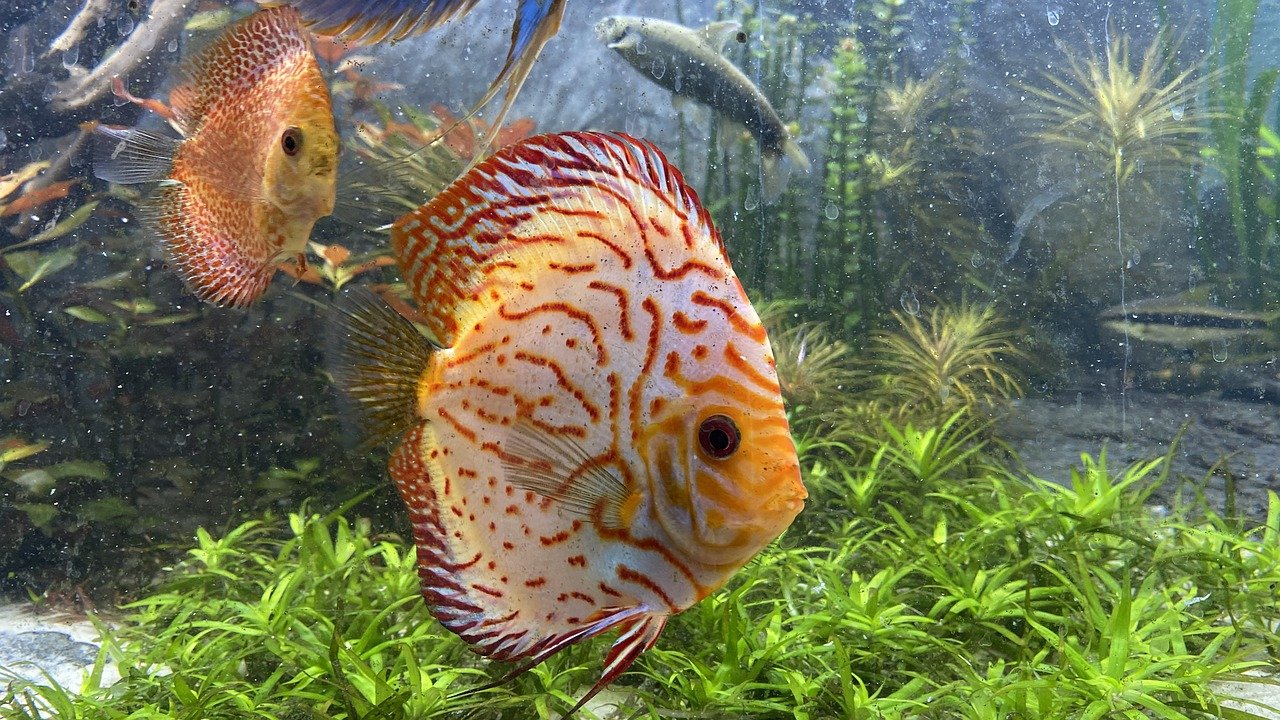Last Updated on February 10, 2023 by Matt
The filter is the cleaning powerhouse of the aquarium. So when it stops working it is a big worry. Without an aquarium filter organic waste will build up quickly and release dangerous compounds such as ammonia and nitrite. As such having your fish tank filter not working will quickly cause huge problems for the health of your aquarium and its inhabitants.
There can be many reasons why a fish tank filter isn’t working. In this article we will stress the importance of a fully functional aquarium filter, before laying out common issues with filters and their solutions.
Hopefully by the end of this article you will have an answer to the question, why is my fish tank filter not working?
IN THIS ARTICLE
Importance of a Functional Aquarium Filter

The importance of a fish tank filter in an aquarium cannot be understated. There are three main types of filtration in good filter systems; mechanical, biological, and chemical filtration.
Each type of filtration functions and focuses on cleaning the water in a different and unique way.
Mechanical filtration works by catching debris floating in the water column as it flows across the media. There are coarse mechanical media pads which catch large particles and fine pads which catch smaller particles.
Biological filtration works by utilizing bacteria to remove ammonia, nitrite, and nitrate. If you remember from the aquarium nitrogen cycle, nitrifying bacteria convert ammonia to nitrite, and nitrite to nitrate. Denitrifying bacteria then convert nitrate to harmless atmospheric nitrogen.
Nitrate is an important plant fertilizer; it is an important source of nitrogen. Algae, as well as your aquarium plants will use this. As the biological filter works to remove nitrate, it will prevent excess algal growth in your tank.
Chemical filtration uses a chemical media to remove impurities which cause odor and discoloration, along with heavy metals and organic waste products. Activated carbon is an extremely common chemical media, along with synthetic media such as Seachem Purigen.
Working together, the three filtration stages provide a clean and clear aquarium environment for your fish, plants, and corals.
A properly working filter will also help to oxygenate the aquarium water. The flow of water from the filter back to the tank will aerate the water. Alongside aquarium wave makers and powerheads it will eliminate dead spots, especially in larger tanks.
Common Issues with Fish Tank Filters and Their Solutions

In the next section of this article we will run through some of the most common issues with fish tank filters and what you can do to fix them.
There are numerous smaller issues that can occur in fish tank filters. Many of these problems are filter specific; they will affect only that filter model.
The problems and solutions outlined below are ones which can affect all filters, no matter if they are canister filters, hang-on-back (HOB) power filters, or internal filters.
No suction
The vast majority of aquarium filters use some form of motor or impeller to draw water from the tank over the filter media.
Canister filters draw the water the furthest; they will be housed underneath the aquarium in a cupboard most likely. The motor creates the power needed to suck the water from the tank through the intake nozzle, over the media, and back through the outflow into the tank.
Power filters are either internal or HOB, but still use an impeller motor to draw water from the tank into and over the media.
If you have very weak suction, or no suction at all, it drastically reduces the cleaning capacity of the filter. This can have huge implications for the tank as a whole. Not only will the aquarium water get cloudy most likely, but debris will build up a lot faster. This will cause an increased amount of ammonia to be produced, leading to ammonia poisoning or the risk of new tank syndrome being caused in the tank.
Solution
The good thing is that in the vast majority of cases no suction is caused by the impeller or intake tube being clogged or broken. This is a very easy fix. All you need to do is unclog the impeller, and it should get the suction back going again
First things first, unplug and turn off the filter. Once you have done this remove the filter from the tank. Have a bucket and a few towels handy so you don’t make too much of a mess!
Always check the easiest thing first. In this case that is the tubing and intake valve and nozzle. Check that there is no build-up of algae or caught plants that could be blocking the flow of water, and remove it if there is.
If not, then it is time to check the impeller. The user manual will show you how to disassemble the filter to reach the impeller. If the impeller is clogged, rinse it and clean it to dislodge the blockage, and reassemble the filter.
Low flow rate
A low flow rate can be a good thing for some fish species, such as Betta fish. Betta fish filters ideally have a lower flow rate. However if you have had a good flow rate and then you see it reducing, then you have a problem.
Having a low flow rate can deoxygenate the water, and cause fish to display the symptoms of oxygen deficiency. They will rapidly move their gills, hang out near the surface, and act sluggishly.
To see if the issue is low flow rate or no suction, you can check the intake valve. If the power still seems the same, but the flow rate from the outflow has reduced, it is a flow rate problem.
Solution
Fixing this issue is very similar to fixing the no suction issue. First, you want to turn off and remove the filter.
Then you want to check the outflow tubing and nozzle. A low flow rate is most likely caused by a blockage in the outflow, or by a blockage in the filter media.
Clear and rinse the tubing thoroughly, and make sure that nothing has become caught in the filter media that is causing a blockage in the filter.
Also check the intake valve and tubing just in case there has been any algal build there as well.
Not running at all
If the aquarium filter isn’t running at all it is a very serious problem. Without proper filtration an aquarium will become very dirty very quickly. And ammonia, nitrite, and nitrate levels will start to climb, which is incredibly dangerous for your fish.
If your filter has stopped running completely it can mean a few things. It could be that the motor itself has become clogged with dirt and stopped working. It could be that a power surge has tripped a fuse. Or it could be that the motor has overheated.
Solution
Just because the filter has stopped running it doesn’t necessarily mean that you have to scrap the filter and get a new one.
As always, ensure that you have turned the filter off at the power outlet before removing it. Check that the motor isn’t clogged, and gently clean it if it is. Only use water if it is a waterproof motor. Otherwise use a moist cloth or compressed air.
If this isn’t the issue, it could be that overheating is a problem. Check to see that enough air is getting to the motor to cool it down. These air vents can easily get blocked with dust, and will cause the motor to overheat and shut down.
If a power issue is the cause of the problem, then you will have to replace the fuse or get a new power supply. Contact the manufacturers and see if the filter is under warranty. If it is then you can get a new power cord posted to you. If not then a new fuse should be easy enough to find from a hardware store. You should be able to get correct power cables from the manufacturer or from a pet store.
Conclusion
Hopefully this guide on why is my fish tank filter not working – common causes and fixes has given you the information you need.
If you have any further questions about your filter in particular, please leave us a comment. We will do our best to rectify your problem!
For more information you can watch the video from Fluval below:








